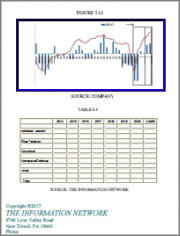
|
시장보고서
상품코드
1483212
세계의 결정질 및 박막 태양전지 시장 분석Analysis of the Solar Markets for Crystalline and Thin Film Solar Cells |
||||||
소개
태양광 시장은 지속 가능한 에너지 솔루션으로의 국제적 전환의 최전선에 있으며, 결정질 태양전지와 박막 태양전지는 이러한 변화에서 매우 중요한 역할을 담당하고 있습니다.
본 보고서에서는 세계 결정질 및 박막 태양전지 시장을 분석하여, 각 부문별 기술 발전의 움직임과 시장 동향, 전략적 과제 등을 조사하였습니다. 또한, 태양전지 기술의 성장과 채택을 촉진하는 요인과 향후 투자 동향 전망, 직면하고 있는 전략적 과제 등을 고찰했습니다.
결정-박막형 태양전지 기술 동향
태양전지 시장은 급속한 기술 혁신과 결정질 및 박막 태양전지의 활용 범위가 넓다는 특징이 있습니다. 결정질 실리콘(c-Si) 태양전지는 단결정과 다결정 모두 포함하며, 높은 효율과 검증된 성능으로 시장을 독점하고 있습니다. 이 분야의 중요한 트렌드 중 하나는 제조 기술과 재료의 발전으로 변환 효율이 지속적으로 향상되고 있다는 점입니다. PERC(Passivated Emitter and Rear Cell) 및 양면 수광 모듈과 같은 기술은 결정질 태양전지의 효율과 에너지 수율을 향상시켜 주거용과 상업용 모두에 더욱 매력적으로 만들고 있습니다. 주거용과 상업용 모두에 더욱 매력적으로 만들고 있습니다.
이와 함께, 박막 태양전지 시장은 특히 유연성, 경량화, 저비용이 중요한 용도를 중심으로 성장하고 있으며, CdTe(카드뮴 텔루르화물), 비정질 실리콘(a-Si), CIGS(구리 인듐 갈륨 셀렌화 구리) 등의 박막 기술은 생산 공정의 재료 및 에너지 사용량을 줄이면서 재료 및 에너지 사용량을 줄이면서 경쟁력 있는 효율을 달성하기 위해 개발되고 있습니다. 박막 분야에서는 높은 효율과 다양한 기판에 대한 적응성으로 인해 CIGS 기술의 활용이 증가하고 있으며, BIPV(건물일체형 태양광 발전) 및 휴대용 태양광 솔루션에 대한 활용이 확대되고 있는 것이 두드러진 추세입니다.
또한, 태양전지 시장에서는 지속가능성과 순환 경제에 대한 관심이 높아지고 있습니다. 결정질 및 박막 태양전지 제조업체들은 태양광 패널이 환경에 미치는 영향을 줄이기 위해 친환경 소재와 재활용 방법을 모색하고 있습니다. 이러한 추세는 보다 엄격한 규제 프레임워크와 친환경 에너지 솔루션에 대한 소비자 및 기업 수요 증가에 힘입어 더욱 강화되고 있습니다.
목차
제1장 서론
제2장 태양전지 기술
- 서론
- 개발 세대
- 제1세대
- 제2세대
- 제3세대
- 연혁
- 동작 원리
- 개요
- 전하 캐리어 광생성
- 전하 캐리어 분리
- pn 접합
- 외부 부하에의 접속
- 태양전지 등가 회로
- 태양전지 효율 요인
- 최대 출력점
- 에너지 변환 효율
- 곡선 요인(FF)
- 양자 효율
- 에너지 변환 효율 비교
- 광흡수 재료
- 벌크
- 박막
- 나노 결정 태양전지
- 집광형 태양열발전(CPV)
- 개요
- 상용 반사경
- 재료 및 디바이스에 관한 연구 개요
- 실리콘 가공
- 박막 프로세스
- 폴리머 가공
- 나노입자 처리
- 투명 전도체
- 페로브 스카이트 태양전지
- PERC(Passivated Emitter And Rear Cell)
제3장 태양전지 제조
- 서론
- 태양전지 제법
- 실리콘 태양전지
- 에칭과 텍스쳐링
- 확산 및 엣지 분리
- 반사 방지 코팅
- 메탈라이제이션(금속화)
제4장 박막 기술
- 서론
- 실리콘 적층 기술
- 아몰퍼스 실리콘(a-Si) 적층
- 미결정 실리콘 적층
- 화합물 반도체 적층 기술
- 서론
- CdTe(카드뮴 텔룰라이드)
- CIGS(구리 인듐 갈륨 셀렌)
- GaAs(갈륨 비소)
- 페로브스카이트
제5장 태양전지 시장
- 서론
- 주요 성장요인
- 태양광발전 산업이 직면하는 과제
- 태양광발전 시스템 비용
- 태양광발전 시스템 운영 지표
- 태양광발전 시스템 유형
- 그리드 접속 분야
- Off-grid 분야
- 시장 동향
- 시장 분석
- 태양전지 시장
- 폴리실리콘 태양전지 시장
- 박막 태양전지 시장
- 박막 태양전지 장비 시장
- 기질
- 제조 비용
- 혁신적 기술
Introduction
The solar energy market is at the forefront of the global shift towards sustainable energy solutions, with crystalline and thin film solar cells playing pivotal roles in this transformation. Our report, "Analysis of the Solar Markets for Crystalline and Thin Film Solar Cells," provides an exhaustive examination of these two key segments, exploring their technological advancements, market trends, and strategic challenges. This comprehensive analysis is designed for industry professionals, offering essential insights into the factors driving the growth and adoption of solar technologies, and guiding strategic decisions for future investments and development.
Trends in Crystalline and Thin Film Solar Cell Technology
The solar market is characterized by rapid technological innovation and diverse applications of crystalline and thin film solar cells. Crystalline silicon (c-Si) solar cells, which include both monocrystalline and polycrystalline types, dominate the market due to their high efficiency and proven performance. One significant trend in this segment is the continuous improvement in conversion efficiencies, driven by advancements in manufacturing techniques and materials. Technologies such as passivated emitter rear cell (PERC) and bifacial modules are enhancing the efficiency and energy yield of crystalline solar cells, making them more attractive for both residential and commercial installations.
In parallel, the thin film solar cell market is gaining momentum, especially in applications where flexibility, lightweight, and lower costs are critical. Thin film technologies, including cadmium telluride (CdTe), amorphous silicon (a-Si), and copper indium gallium selenide (CIGS), are being developed to offer competitive efficiency levels while utilizing less material and energy in the production process. A notable trend in the thin film sector is the increasing use of CIGS technology due to its higher efficiency and adaptability to various substrates, which is expanding its applications in building-integrated photovoltaics (BIPV) and portable solar solutions.
Moreover, the solar market is witnessing a growing emphasis on sustainability and the circular economy. Both crystalline and thin film solar cell manufacturers are exploring eco-friendly materials and recycling methods to reduce the environmental impact of solar panels. This trend is supported by stricter regulatory frameworks and an increasing demand for greener energy solutions from consumers and businesses alike.
The Need to Purchase This Report
Understanding the complexities and opportunities in the solar energy market is essential for businesses aiming to succeed in this competitive industry. This report provides a detailed analysis of the current technological trends, market drivers, and challenges impacting the crystalline and thin film solar cell segments. By purchasing this report, industry professionals will gain valuable insights into the advancements and strategic issues shaping the solar market, enabling them to make informed decisions and capitalize on emerging opportunities.
Our report offers strategic recommendations for leveraging technological trends to enhance product performance and market positioning. It includes comprehensive market forecasts, competitive landscape assessments, and a thorough examination of the key players driving innovation in both crystalline and thin film solar cell technologies. Companies looking to invest in solar technology or expand their market presence will find this report indispensable for identifying growth areas and understanding competitive dynamics.
In summary, "Analysis of the Solar Markets for Crystalline and Thin Film Solar Cells" is an essential resource for industry professionals, engineers, researchers, and business leaders. It provides a detailed exploration of the technological trends and market dynamics influencing the solar energy sector, equipping readers with the knowledge necessary to navigate this rapidly evolving field and capitalize on its potential. This report is designed to inform strategic planning, investment decisions, and the development of innovative solar solutions that will drive future success in the global energy market.
Table of Contents
Chapter 1. Introduction
Chapter 2. Solar Cell Technology
- 2.1. Introduction
- 2.2. Generations of development
- 2.2.1. First Generation
- 2.2.2. Second Generation
- 2.2.3. Third Generation
- 2.3. History
- 2.4. Theory of Operation
- 2.4.1. Simple explanation
- 2.4.2. Photogeneration of charge carriers
- 2.4.3. Charge carrier separation
- 2.4.4. The p-n junction
- 2.4.5. Connection to an external load
- 2.4.6. Equivalent circuit of a solar cell
- 2.5. Solar cell efficiency factors
- 2.5.1. Maximum-power point
- 2.5.2. Energy conversion efficiency
- 2.5.3. Fill factor
- 2.5.4. Quantum efficiency
- 2.5.5. Comparison of energy conversion efficiencies
- 2.5.5.1. Peak watt (or Watt peak)
- 2.5.5.2. Solar cells and energy payback
- 2.6. Light-absorbing materials
- 2.6.1. Bulk
- 2.6.1.1. Silicon
- 2.6.2. Thin films
- 2.6.2.1. CdTe
- 2.6.2.2. CIGS
- 2.6.2.3. CIS
- 2.6.2.4. Gallium arsenide (GaAs) multijunction
- 2.6.2.5. Light absorbing dyes
- 2.6.2.6. Organic/polymer solar cells
- 2.6.2.7. Silicon Thin Films
- 2.6.3. Nanocrystalline solar cells
- 2.6.1. Bulk
- 2.7. Concentrating photovoltaics (CPV)
- 2.7.1. Introduction
- 2.7.2. Commercial reflectors
- 2.8. Overview of research on materials and devices
- 2.8.1. Silicon processing
- 2.8.2. Thin-film processing
- 2.8.3. Polymer processing
- 2.8.4. Nanoparticle processing
- 2.8.5. Transparent conductors
- 2.8.6. Perovskite Solar Cells
- 2.8.7. PERC (Passivated Emitter And Rear Cell)
Chapter 3. Solar Cell Manufacturing
- 3.1. Introduction
- 3.2. How Solar Cells Are Made
- 3.2.1. Silicon Solar Cell
- 3.2.2. Etching And Texturing
- 3.2.3. Diffusion And Edge Isolation
- 3.2.4. Anti-Reflection Coating
- 3.2.5. Metallization
Chapter 4. Thin Film Technology
- 4.1. Introduction
- 4.2. Silicon Deposition Technologies
- 4.2.1. Amorphous Silicon Deposition
- 4.2.2. Microcrystalline Silicon Deposition
- 4.3. Compound Semiconductor Deposition Technologies
- 4.3.1. Introduction
- 4.3.2. CdTe-Cadmium Telluride
- 4.3.3. CIGS-Copper Indium Gallium Selenide
- 4.3.4. GaAs-Gallium Arsenide
- 4.3.5. Perovskite
Chapter 5. Solar Markets
- 5.1. Introduction
- 5.2. Key Growth Drivers
- 5.2.1. Government Incentives
- 5.2.2. Low Cost Solar
- 5.2.3. Large Market Among Underserved Populations
- 5.3. Challenges Facing The Solar Power Industry
- 5.4. Cost Of A Photovoltaic System
- 5.5. Operating Metrics Of A Photovoltaic System
- 5.6. Types Of PV System
- 5.6.1. Grid Connected Sector
- 5.6.2. Off-Grid Sector
- 5.6.3. Market Development
- 5.7. Market Analysis
- 5.7.1. Solar Cell Market
- 5.7.2. Polysilicon Solar Cell Market
- 5.7.2.1. Wire Saw Wafering Technology
- 5.7.2.2. Kerfless Wafering
- 5.7.3. Thin Film Solar Cell Market
- 5.7.3.1. Driving Forces
- 5.7.3.2. Competing Technologies
- 5.7.3.3. Third-Generation Technologies
- 5.7.4. Thin Film Solar Cell Equipment Market
- 5.7.5. Substrates
- 5.7.6. Manufacturing Costs
- 5.8. Disruptive Technologies



















